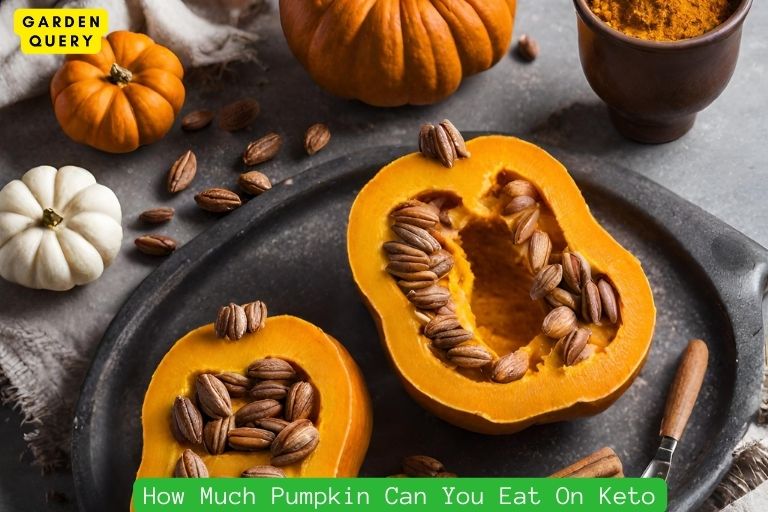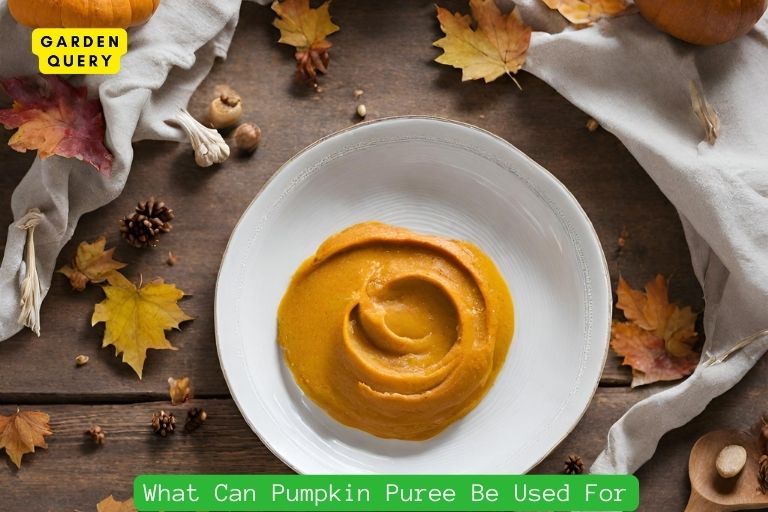How Much Pumpkin Can You Eat On Keto?
Keto Diet and Pumpkin Consumption
Understanding the Keto Diet and its restrictions
The ketogenic diet, or keto diet for short, is a low-carb, high-fat eating plan that has gained popularity for its potential weight loss benefits. The goal of the diet is to induce a state of ketosis, where the body uses fat for fuel instead of carbohydrates. In order to achieve ketosis, individuals following the diet must strictly limit their intake of carbohydrates, typically to less than 50 grams per day.
While the keto diet does restrict certain foods, it does not mean you have to completely eliminate your favorite fall treat: pumpkin. Pumpkin is actually quite low in carbohydrates, making it a suitable option for those on the keto diet. One cup of cooked pumpkin contains only about 9 grams of net carbs, which is the total carbs minus the fiber content.

Incorporating Pumpkin into a Keto Diet correctly
When incorporating pumpkin into a keto diet, it’s important to keep an eye on portion sizes and the other ingredients you are using. Here are a few tips for enjoying pumpkin while staying in ketosis:
- Stick to small portions: While pumpkin is relatively low in carbs, it still contains some, so it’s important to watch your portion sizes. Aim for no more than half a cup to one cup of cooked pumpkin per serving.
- Choose homemade over store-bought: Many store-bought pumpkin products, such as pumpkin spice lattes or pumpkin pie fillings, can be loaded with added sugars and high in carbs. Opt for homemade versions, where you can control the ingredients and keep them keto-friendly.
- Use pumpkin as a flavor enhancer: Instead of relying on pumpkin as the main ingredient in your dishes, use it as a flavor enhancer. Add a tablespoon of canned pumpkin puree to your morning smoothie or mix it into your favorite keto-friendly muffin or pancake batter for a touch of fall flavor.
- Balance your macros: When including pumpkin in your keto diet, be mindful of your overall macronutrient intake. Remember that the keto diet is high in fat, so balance out the carbs from the pumpkin with healthy fats from sources like avocado, olive oil, or nuts.
- Be cautious of pumpkin spice products: While pumpkin spice flavorings can be delicious, many commercially-available products may contain added sugars and artificial ingredients. Read labels carefully and opt for natural, keto-friendly spices like cinnamon, nutmeg, and ginger to flavor your pumpkin dishes.
Pumpkin can be a tasty addition to a keto diet when consumed in moderation and paired with other low-carb, high-fat foods. Just remember to keep an eye on your portion sizes and choose keto-friendly recipes and ingredients. With these guidelines in mind, you can enjoy the flavors of fall without derailing your ketogenic lifestyle.
Pumpkin Nutrition and Carbohydrate Content
Pumpkin nutritional profile and macronutrients
Pumpkins are not only a festive decoration during fall; they are also a nutritious vegetable that can be enjoyed as part of a keto diet. They are packed with essential vitamins and minerals, including vitamin A, vitamin C, potassium, and fiber.
In terms of macronutrients, a 1-cup serving of cooked pumpkin contains about 49 calories, 0.2 grams of fat, 12 grams of total carbohydrates, and 2.7 grams of fiber. It is also low in protein, with only 2 grams per serving.
Calculating net carbohydrates in pumpkin servings
When following a keto diet, it’s crucial to keep track of net carbohydrates. Net carbs are the total carbohydrates in a food item minus the fiber content, as fiber is not digested and does not contribute to blood sugar levels or knock you out of ketosis.
To calculate the net carbohydrates in pumpkin, you simply subtract the fiber content from the total carbohydrates. In the case of a 1-cup serving of cooked pumpkin, the net carb count would be 12 grams of total carbs minus 2.7 grams of fiber, equaling 9.3 grams of net carbs.
It’s important to note that portion sizes may vary, and the carbohydrate content can differ depending on whether the pumpkin is canned, cooked, or raw. So always check the nutrition label or use a reliable food database for accuracy.
How much pumpkin can you eat on keto?
While pumpkin can be enjoyed on a keto diet, it’s essential to keep an eye on portion sizes to stay within your daily net carb limit.
As a general guideline, aim to consume pumpkin in moderation. This means keeping your portion sizes small and accounting for the carbohydrates in other foods you eat during the day. Remember, the goal of a keto diet is to enter and maintain a state of ketosis, where your body relies on fat for fuel instead of carbohydrates.
To give you an idea, a 1/2-cup serving of cooked pumpkin contains approximately 6 grams of net carbs. So, depending on your individual net carb allowance, you may be able to fit a small portion of pumpkin into your daily keto meal plan.
Some delicious and keto-friendly ways to enjoy pumpkin include adding it to soups, stews, or salads, incorporating it into low-carb desserts, or using it as a base for creamy keto-friendly pumpkin sauces.
In conclusion, pumpkin can be a tasty and nutritious addition to a keto diet when consumed in moderation. Be mindful of portion sizes and track your net carbs to ensure you stay within your dietary goals. Enjoy the flavors of fall while supporting your keto lifestyle.
Keto-Friendly Pumpkin Recipes and Serving Sizes
Pumpkin recipes suitable for a Keto Diet
When it comes to following a ketogenic diet, finding suitable recipes can be a challenge. However, incorporating pumpkin into your keto-friendly menu is not only possible but also delicious. Here are a few pumpkin recipes that you can enjoy while staying in ketosis:
- Pumpkin Soup: A warm and comforting dish, pumpkin soup can be made keto-friendly by using vegetable or bone broth as the base and adding ingredients such as coconut milk or heavy cream for richness. Season with keto-approved spices like nutmeg, cinnamon, and ginger for added flavor.
- Pumpkin Muffins: You can make low-carb and keto-friendly pumpkin muffins by using almond or coconut flour instead of regular flour. Add a dash of pumpkin spice, some keto-friendly sweeteners like stevia or erythritol, and enjoy a delicious, guilt-free treat.
- Roasted Pumpkin Seeds: Pumpkin seeds are an excellent source of healthy fats and protein. Toss them in olive oil, sprinkle with salt or your favorite seasonings, and roast them in the oven until crispy. They make for a crunchy and satisfying low-carb snack.
Determining the appropriate serving sizes for pumpkin dishes
While pumpkin can be a healthy addition to a keto diet, it is important to be mindful of your portion sizes to ensure you stay within your macronutrient limits. Here are some general guidelines for determining appropriate serving sizes of pumpkin dishes:
- Pureed Pumpkin: A serving size of pureed pumpkin is typically around ½ cup. This equates to approximately 50 calories, 3 grams of net carbs, and 2 grams of fiber. It is essential to track the net carbs to stay in ketosis.
- Pumpkin Seeds: A serving size of pumpkin seeds is around 1 ounce, which is roughly a handful. One ounce of pumpkin seeds contains about 150 calories, 5 grams of net carbs, and 5 grams of protein. Keep in mind that roasted and flavored pumpkin seeds may have added ingredients that increase the carb content, so check the label carefully.
- Pumpkin in Recipes: For recipes that include pumpkin as an ingredient, such as soup or muffins, it is essential to calculate the net carbs based on the total amount of pumpkin used and divide it by the number of servings. This information can be obtained by checking the nutrition facts of the specific recipe ingredients or using online nutrition calculators.
By being mindful of the serving sizes, you can enjoy the flavors of pumpkin while maintaining your ketogenic lifestyle. Remember to track your macros and adjust the serving sizes according to your personal dietary needs and goals.
Overall, incorporating pumpkin into your keto diet is not only possible but can also provide you with a variety of tasty and satisfying dishes. Be creative, experiment with different flavors, and enjoy the health benefits of this versatile fall vegetable while staying in ketosis.
Benefits of Pumpkin in a Keto Diet
If you’re on a keto diet, you may be wondering if you can include pumpkin in your meals. The good news is that pumpkin is a low-carb vegetable that can be enjoyed on a keto diet in moderation. Not only does it add flavor and variety to your meals, but it also offers numerous health benefits. Let’s explore why incorporating pumpkin into your keto diet can be beneficial for your health.
Health benefits of incorporating pumpkin into a Keto Diet
- Rich in nutrients: Pumpkin is packed with essential vitamins and minerals, including vitamin A, vitamin C, potassium, and fiber. These nutrients promote overall wellbeing and support your body’s functions.
- Boosts immune system: Pumpkin is an excellent source of vitamin C, which can enhance your immune system and help protect against illnesses and infections. A strong immune system is crucial for maintaining optimal health.
- Supports eye health: Pumpkin is renowned for its high vitamin A content, which is essential for good vision. Consuming pumpkin regularly can help preserve vision, protect against age-related macular degeneration, and promote healthy eyes.
- Promotes heart health: The fiber, potassium, and vitamin C in pumpkin all contribute to a healthier heart. Fiber helps control cholesterol levels, potassium aids in maintaining healthy blood pressure, and vitamin C promotes optimal heart function.
- Weight management: Despite being low in calories, pumpkin is rich in fiber, which can promote feelings of fullness and reduce appetite. Including pumpkin in your keto meals can help you stay satisfied without compromising your weight loss goals.
Enhancing nutrient intake and satiety with pumpkin consumption
In addition to its health benefits, incorporating pumpkin into your keto diet can enhance your nutrient intake and make your meals more satisfying. Here are a few ways to enjoy pumpkin while on a keto diet:
- Pumpkin puree: Use homemade or canned pumpkin puree in keto-friendly recipes like soups, stews, or smoothies. Be sure to choose unsweetened and unflavored options to keep your carb intake low.
- Roasted pumpkin: Cut fresh pumpkin into cubes, season with keto-friendly spices, and roast until tender. Roasted pumpkin can be enjoyed as a side dish or added to salads, omelets, or roasted vegetable medleys.
- Pumpkin seeds: Pumpkin seeds, also known as pepitas, are a nutritious snack option that can be enjoyed on a keto diet. Roast them with salt, pepper, or your preferred seasonings for a satisfying and crunchy snack.
Remember, while pumpkin is a nutritious addition to a keto diet, moderation is the key. Be mindful of your overall carb intake and adjust your portion sizes accordingly to ensure you stay within your keto macros.
In conclusion, incorporating pumpkin into your keto diet can offer numerous health benefits. From supporting your immune system and promoting heart health to enhancing nutrient intake and satiety, pumpkin is a versatile and delicious addition to your keto meals. Enjoy this low-carb vegetable in moderation and savor the flavors and benefits it brings to your plate.
Moderation and Caveats
Potential challenges and considerations with pumpkin intake
While pumpkin can be a tasty and nutritious addition to a keto diet, there are some potential challenges and considerations to keep in mind. Here are a few things to be aware of when incorporating pumpkin into your keto meal plan:
Carbohydrate content: Pumpkin does contain carbohydrates, and even though it is relatively low in net carbs compared to other fruits and vegetables, it can still contribute to your daily carb intake. It’s important to track your carb consumption and ensure that you are within your target range for ketosis.
Meal portion size: While pumpkin is keto-friendly, it’s crucial to have portion control when including it in your meals. It’s easy to go overboard with pumpkin-based dishes and inadvertently consume too many carbs. Be mindful of your portion sizes and consider using smaller amounts of pumpkin in your recipes.
Added sugars: Some commercially prepared pumpkin products, such as pumpkin pie fillings or canned pumpkin, may contain added sugars. Be sure to read labels carefully and choose products that are free from added sugars or sweeteners to keep your keto diet on track.
Balancing pumpkin consumption with other Keto-friendly foods
In order to maintain a state of ketosis while enjoying pumpkin, it’s crucial to balance your pumpkin consumption with other keto-friendly foods. Here are some tips to help you maintain the right balance:
Prioritize low-carb options: When planning your meals, focus on incorporating low-carb vegetables, healthy fats, and high-quality protein sources. These foods should make up the bulk of your keto diet, while pumpkin can be enjoyed in smaller portions as a flavorful addition.
Track your macros: Keep track of your daily macronutrient intake, including carbohydrates, fat, and protein. This will help you ensure that you are staying within your desired keto ratios while incorporating pumpkin into your meals. Use a food tracking app or website to make this process easier.
Experiment with recipes: Get creative in the kitchen and experiment with keto-friendly pumpkin recipes. Try adding roasted pumpkin to salads, making a pumpkin soup, or baking pumpkin seeds for a crunchy snack. By diversifying your pumpkin consumption, you can enjoy its flavors and benefits while maintaining your keto lifestyle.
In conclusion, while pumpkin can be incorporated into a keto diet, it’s crucial to exercise moderation, be mindful of portion sizes, and balance pumpkin consumption with other low-carb foods. By doing so, you can enjoy the seasonal flavors of pumpkin while still staying on track with your ketogenic goals. Remember to consult with a healthcare professional or registered dietitian before making any significant changes to your diet.
- Best Therapists In Dallas - February 1, 2024
- Holly Willoughby Husband: Holly Willoughby’s Love Story - January 30, 2024
- Holly Willoughby Dress: 5 Style Secrets and 7 Must-Know Career Milestones - January 30, 2024





